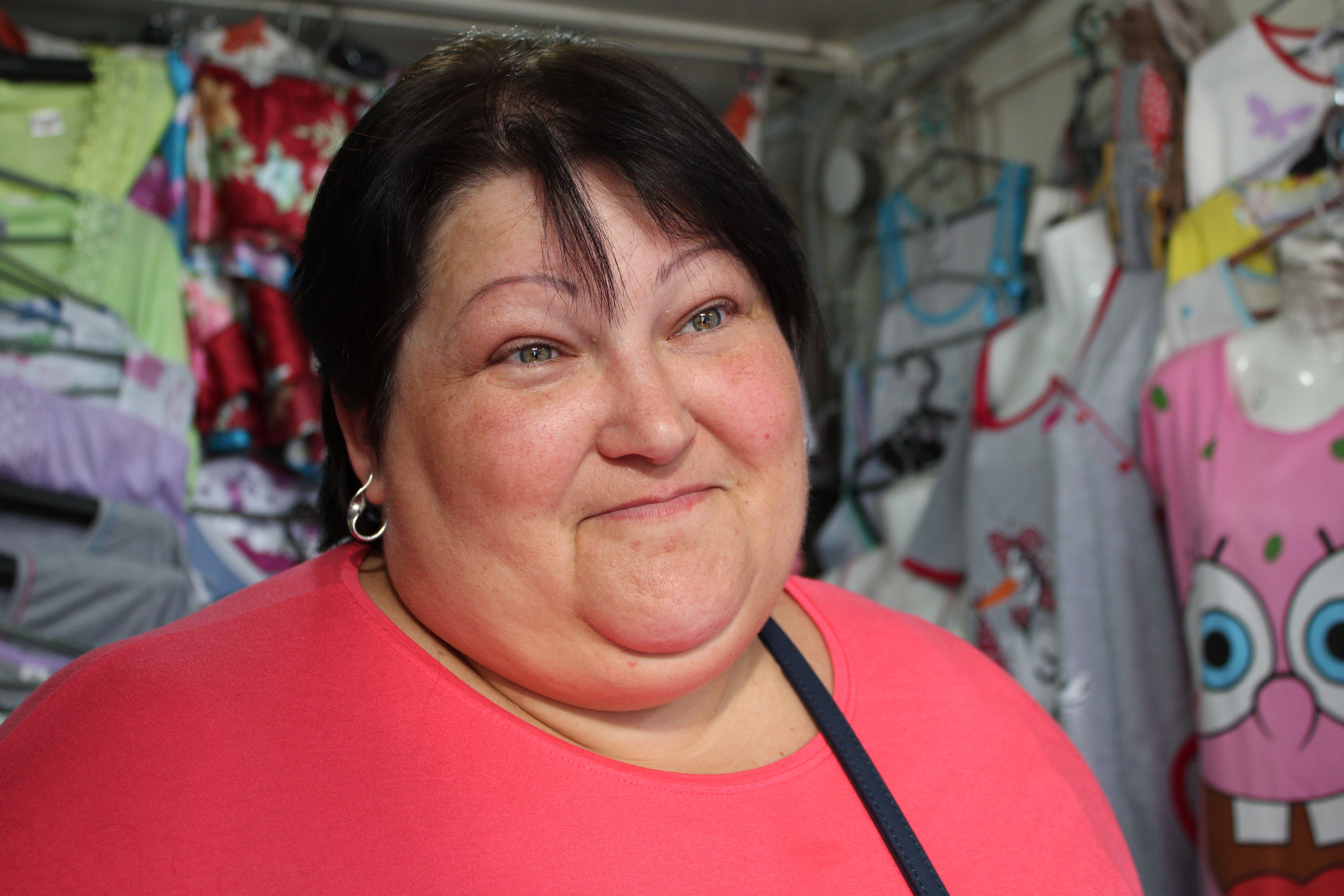Preparing to travel to Ukraine to report on women in the war, I thought about what type of individuals I would get to know. I knew I would encounter women familiar with the costs of war: trauma, sacrifice, and loss of all normalcy, among other things. As a student studying conflict and a former military member myself, I assumed I understood what a war story was. To my surprise, I did not.
Let me introduce the conflict in Ukraine by sharing a few of the many feminine faces who fight not only for their country, but for their right to fight.
Lana Krombeth decided to fight in the East after participating in the Maidan protests in 2014. It was at that moment she said she was baptized into the military. Despite her motivation to serve, she was not accepted as a volunteer into a battalion until February 2015. The battalions only offered her the positions of cook and administrative assistant. Lana also lacked support from family for her decision to be a soldier. Her grandparents asked her not to visit them anymore.
Andriana Susak became a volunteer in 2014. She wanted to serve as an assault trooper, but was made a seamstress instead. During a combat operation Andriana put paint on her face, grabbed a weapon and began to participate in the fight. Others noticed, but did not stop her. For a second time, Andriana decided to engage in the combat operation. Seeing her skill, the battalion allowed her to serve as an assault trooper unofficially. She continued in this role until she was five months pregnant with her first child.
The unforeseen war in Ukraine left ordinary citizens scrambling to provide services for an unprepared military. I traveled to the Donetsk region of Ukraine and discovered the stories of women who volunteered in the conflict without ever donning a uniform.
Anna Kotielnikova, a lifelong resident of Mariupol, Ukraine, was working as a representative for a medical company in 2014 when the conflict began. She recalls Russian troops occupying her city and a mixture of locals and Ukrainian soldiers fighting to liberate it.
Kotielnikova began assisting the Ukrainian forces immediately. A secret Facebook group of locals coordinated volunteer efforts to gather food, medication, undergarments, and more for the ill-equipped fighters. She volunteered to drive her own vehicle to the front lines to deliver supplies, and on the way home brought critically wounded individuals to the local hospital. Acting as the ambulance in a combat zone, she wore a helmet and bulletproof vest while driving.
Another local, Anzhela Tymchenko, owned a commercial complex before the war started. In 2014, separatists burned the complex to the ground. She and her family decided to move forward by spending their time and money volunteering instead of rebuilding the business.
From previous volunteer experiences, Tymchenko knew of an oncology unit for orphaned and abandoned children in a Donetsk hospital. When “little green men” occupied Donetsk, the children stopped receiving proper care. Together with friends, she rented an ambulance and posed as a doctor to retrieve the children from the occupied area. In all, they transferred 16 children from Donetsk to non-occupied hospitals in Ukraine.
Speaking with locals like these women, it is clear that the women who contributed to the war extend far beyond those who wore a uniform.
Far be it from me to me to consider war a moment for personal gain, but it does seem that the conflict in 2014 allowed women a larger role in the community.
In Mariupol, I met with eight different women who all founded at least one non-governmental organization to assist with various problems like internally displaced individuals, sexual violence from the conflict, volunteer mobilization, and more.
Halyna Odnoroh, a former businesswoman, created the Coordination Volunteer Council in 2015 to manage the many volunteer efforts in Mariupol regarding city development. In 2017, she also founded Civic Movement Mariupol to continue activism for repairing the city.
Tetiana Bondar, a clothes vendor, co-founded Help to Children in Donbass in 2014. She cried as she recalled several individuals in their pajamas asking where to find food and clothes. These were internally displaced people who left their homes in the middle of the night when Sloviansk was occupied. She was so moved by meeting these people that she helped create a charity fund for displaced families that still functions today.
I was most struck by Maryna Puhachova and her organization for women affected by the war. As a lawyer, Puhachova was providing pro bono legal assistance to displaced peoples. She decided to create an organization that provided legal, medical, and psychological services to those who have experienced violence. Her group is one of only a few that collects data on the increasingly high instances of sexual assault, domestic violence, and prostitution in gray zone communities.
Importantly, all of the women I met with continued their organizations and community involvement after the war. It is also common for these communities to have majority female councils. As famously put by John Stewart Mills, “War is an ugly thing.” But perhaps this conflict opened a door for women to step into larger leadership roles in affected communities.


